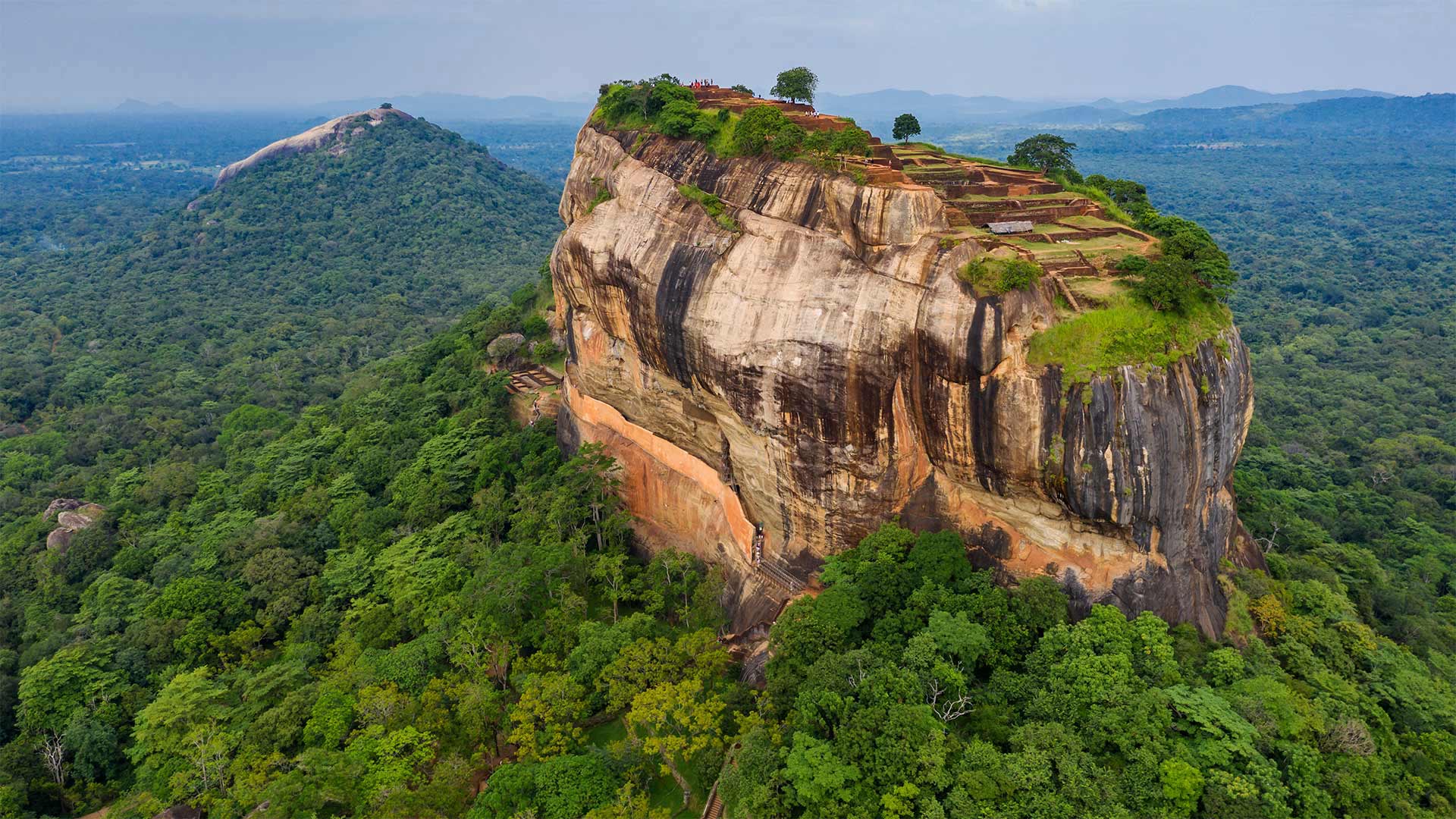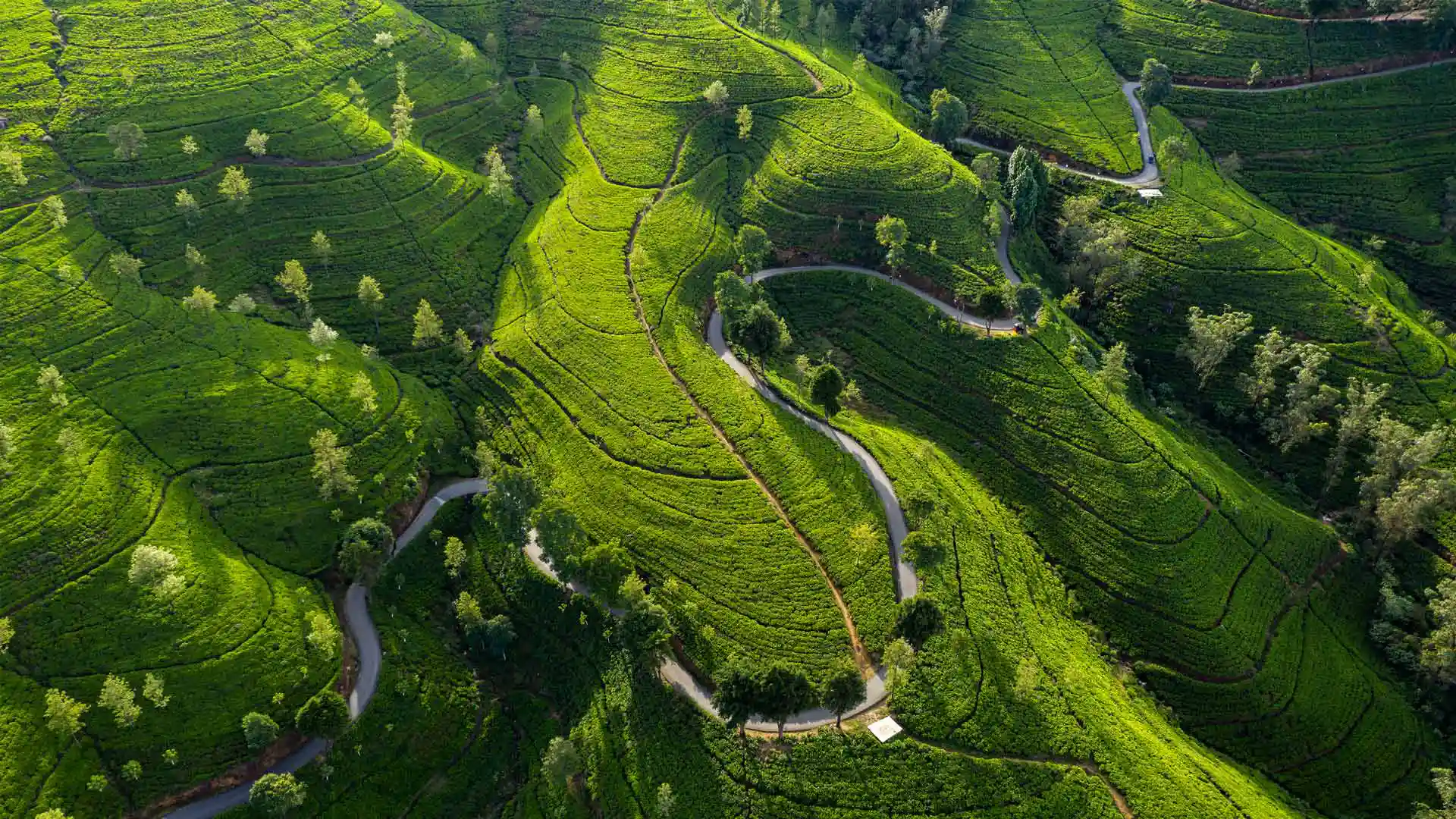爱丁堡茶园, 努沃勒埃利耶, 斯里兰卡 Edinburgh Tea Estate, Nuwara Eliya, Sri Lanka (© Jeremy Woodhouse/Getty Images)
爱丁堡茶园, 努沃勒埃利耶, 斯里兰卡 Edinburgh Tea Estate, Nuwara Eliya, Sri Lanka (© Jeremy Woodhouse/Getty Images)
你好,你在找“茶”吗? Hello, is it 'tea' you're looking for?
努沃勒埃利耶, 斯里兰卡
从中国的功夫茶到英国的红茶,世界各地的茶文化丰富而迷人。近年来,茶叶旅游越来越受欢迎,人们参观茶庄和茶园,体验茶文化,并了解茶叶的历史。这张照片里的爱丁堡茶园就是这样的一个地方。凭借其殖民时代的建筑和薄雾笼罩的茶园,这片坐落于斯里兰卡的努沃勒埃利耶的高地赢得了“小英格兰”的称号。这个地方也因出产部分世界上最精良的橙白毫(一种红茶)而闻名天下。
Nuwara Eliya, Sri Lanka
Legend has it that tea was first brewed accidentally around 2737 BC in China thanks to a strong wind and some loose leaves. If you find that hard to swallow, there are other origin stories to choose from. However, one thing is certain—the feeling it stirs in tea drinkers worldwide. From gongfu tea practice in China to darye in Korea, there are plenty of fascinating tea cultures to savor. Tea tourism has gained popularity, with visitors to tea plantations and estates learning all about their history. Our homepage image shows one such place, Nuwara Eliya's Edinburgh Estate in the central highlands of Sri Lanka. Nuwara Eliya's colonial-era buildings and mist-shrouded tea gardens have earned it the name 'Little England.' The area is known for producing some of the world's finest orange pekoe tea. So, for your next trip, are you willing to 'chai' something new?
狮子岩,斯里兰卡中央省 Sigiriya Rock, Central Province, Sri Lanka (© Jeremy Woodhouse/Getty Images)

狮子岩,斯里兰卡中央省 Sigiriya Rock, Central Province, Sri Lanka (© Jeremy Woodhouse/Getty Images)
Rock of ages
We're here at Sigiriya, or Lion Rock, in Sri Lanka, for the South Asian nation's Independence Day, celebrated annually on February 4. Sigiriya towers 600 feet off the ground, jutting dramatically out of the heart of this island country and serving as a formidable monument to the past. The king of Sri Lanka himself, King Kashyapa, who ruled from 473 to 495 CE, once made this the site of his new capital. He ordered that his palace be constructed atop the rock and about halfway up, he had a large gateway carved into the side of the outcropping in the shape of a lion (hence the name). His fortress was abandoned when he died, and the site later served as a monastery. These days it's a tourist attraction and a UNESCO World Heritage Site.
